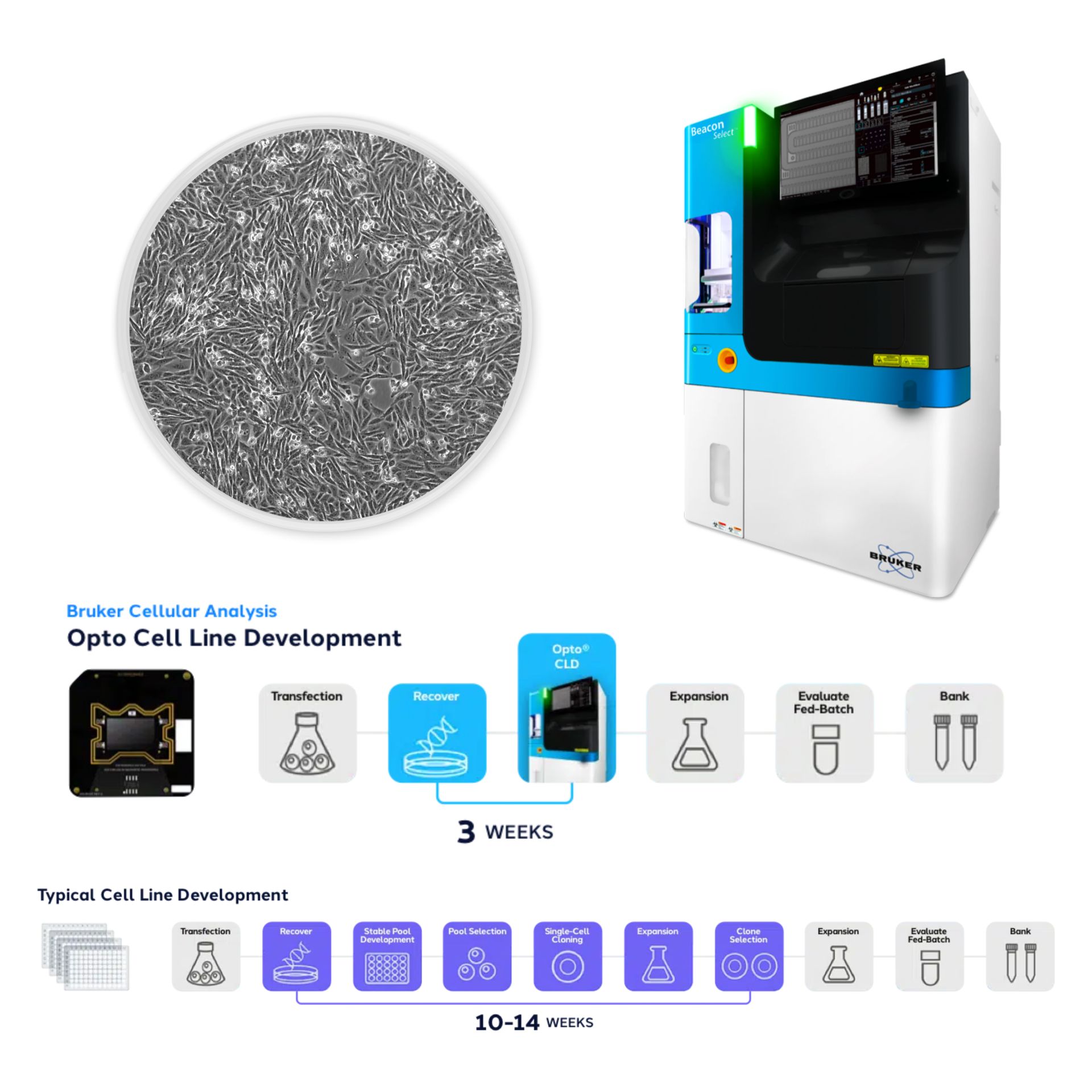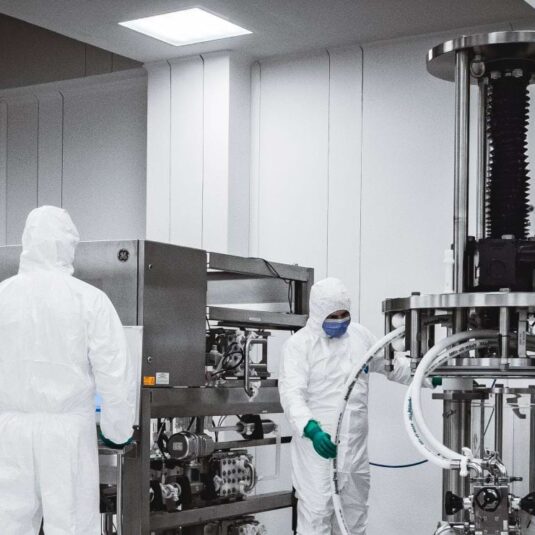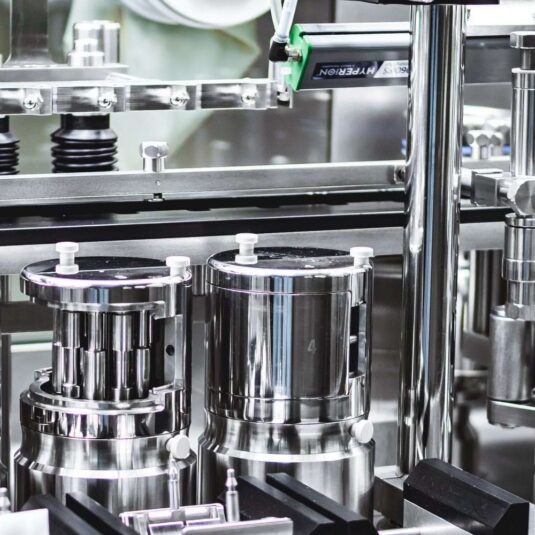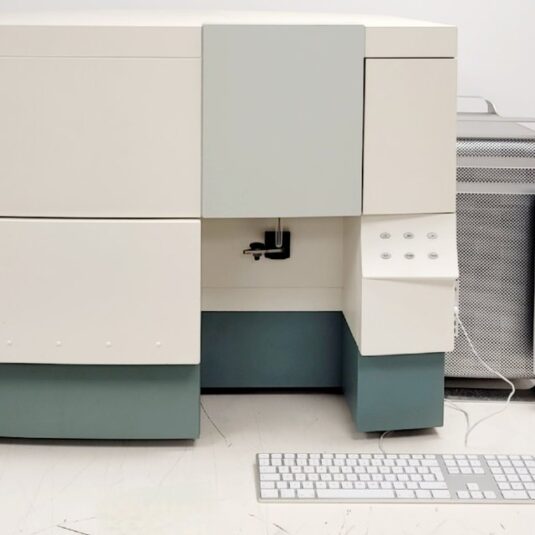Role of Stable Cell Line in Biopharmaceutical Manufacturing
Drug development, Drug product, Manufacturing
- Stable cell lines are the backbone of modern biologics manufacturing, enabling the large-scale production of proteins.
- Achieving monoclonality and genetic stability is critical for regulatory approval. Advanced platforms like Beacon Select System accelerate single-cell screening and enable real-time multiparametric assays.
- In an era where speed-to-market and cost efficiency define competitiveness in biopharma, stable cell line technology is undergoing a profound transformation.
What Is a Stable Cell Line in Biopharmaceutical Production?
In biopharmaceutical manufacturing, a stable cell line represents genetically engineered cells that consistently produce therapeutic proteins such as monoclonal antibodies or recombinant proteins over many generations. Stability of the cell line is essential to ensure reliable and predictable outcomes in the cell culture phase of the upstream process.
The most commonly used cells for stable cell line generation in the biopharmaceutical industry are Chinese Hamster Ovary (CHO) cells.1 CHO cells are favored due to their ability to grow rapidly in suspension cultures, adapt well to GMP production environments, and perform essential post-translational modifications necessary for proper function of therapeutic proteins. Establishing a stable CHO cell line involves screening hundreds or thousands of clones for optimal growth characteristics, product yield, and gene expression stability, which ensures the upstream process remains predictable and robust.
The development of stable cell lines is often supported by CDMO companies like Mabion specializing in advanced biopharma technology and streamlined bioprocessing methods. These organizations possess the expertise to rapidly screen, select, and optimize cell clones, reducing timelines and improving cost-effectiveness for biopharma manufacturers.
Why Stable Cell Lines Are Essential for Consistent Drug Quality?
Stable cell lines are critical for ensuring consistent drug quality due to their capacity to maintain uniform gene expression profiles, which directly influence the safety and efficacy of therapeutic proteins. Variations in gene expression during biopharmaceutical manufacturing can cause changes in critical quality attributes, such as protein folding, aggregation, and glycosylation, potentially compromising the drug’s clinical effectiveness and safety profile.2,3 Thus, developing a stable CHO cell line involves meticulous screening and optimization processes, targeting clones that demonstrate sustained performance across multiple cell culture passages. According to scientific literature, consistent performance in the upstream process reduces production risks throughout their production lifecycle.4 Therefore, rigorous cell line development, involving extensive clone selection and comprehensive bioprocessing evaluation, is crucial to avoid batch-to-batch variations.
How Are Stable Cell Lines Developed in Biomanufacturing?

The initial step in Cell Line Development involves constructing recombinant DNA vectors containing the gene of interest encoding the target therapeutic protein. This gene construct typically includes optimized promoter sequences (CMV, EF-1α, SV40),5 selection markers (DHFR, GS),6 polyadenylation signals, and regulatory elements designed for efficient transcriptional activation and stable host genome integration.7
In the transfection stage, the engineered recombinant DNA constructs are transfected into CHO host cells using electroporation or chemical methods, followed by antibiotic- or metabolic-based selection to enrich the population for successfully integrated gene constructs. Transfection typically occurs in batch cultures, and stable transfectants are cultivated for approximately 2-4 weeks to allow sufficient growth, ensuring that stable integration events have occurred and eliminating transient expression background. During this period, the cells undergo continuous evaluation for expression levels and viability to ensure suitability for subsequent single-cell cloning.8
Since 2023, Mabion has integrated the Beacon Select Optofluidic System into our cell line development workflow. Utilizing proprietary Opto-Electro-Positioning (OEP™) technology, the system precisely manipulates individual CHO cells, isolating single cells within thousands of individual NanoPen™ chambers – nanoliter-scale microenvironments serving as independent mini-bioreactors.9 The Beacon stage confirms monoclonality with greater than 99% accuracy via continuous, automated, high-resolution imaging, crucial for regulatory submissions to FDA and EMA, thus accelerating timeline compliance compared to traditional limiting dilution methods.10 This step significantly enhancing the regulatory credibility and efficiency of clone documentation compared to manual methods such as limiting dilution or fluorescence-activated cell sorting (FACS).
Directly on the Beacon CLD platform, we perform real-time multiparametric assays while measuring multiple critical quality attributes (CQAs). These assays quantify therapeutic protein secretion, assess glycosylation variants, detect aggregation propensity, and monitor growth kinetics, providing robust, multidimensional data early in the development timeline (typically within a single week post-cloning) to thoroughly characterize isolated single-cell clones.11 This rapid screening capacity accelerates informed decision-making for the selection of optimal clones, significantly shortening conventional clone-selection cycles and lowering development risks associated with late-stage failures.
Selected candidate clones undergo systematic expansion in increasingly larger suspension cultures, first at R&D laboratory scale (shaker flasks, spin tubes, or Ambr® microbioreactors) and later at pilot scale (bioreactors, typically 10-50 liters).12 Our analytical team rigorously evaluate these expanded clones for productivity consistency, gene expression stability (via qPCR and flow cytometry analyses), and robustness across multiple passages, typically over a 6-8 week validation period. These extensive characterizations confirm the clone’s suitability for GMP-compliant upstream bioprocessing.
Once optimal clones are identified and extensively characterized, we proceed to generate fully documented GMP-compliant cell banks (MCB and WCB). This process involves cryopreservation under controlled conditions (validated freeze-thaw protocols and controlled-rate freezers), stringent tests for identity, genetic integrity, microbiological purity (absence of mycoplasma, bacterial, fungal, and viral contaminants), adventitious viral contamination (in compliance with ICH guidelines), and robust documentation fulfilling EMA and FDA regulatory submissions. Mabion maintains meticulous documentation, enabling seamless transfer to commercial-scale GMP biologics manufacturing.
Benefits of Using Stable Cell Lines in Large-Scale Production
Stable cell lines are designed to perform robustly under various culture conditions, from laboratory flasks to multi-thousand-liter bioreactors. Their stability simplifies the transfer of processes from small-scale development to commercial-scale GMP manufacturing. Especially CHO cells are optimized for sustained high-level expression of therapeutic proteins. This results in increased volumetric productivity in large-scale bioreactors, reducing cost per gram of product.13 Higher yields also accelerate time-to-market by minimizing the number of production cycles required. Preparing a highly qualitative product comes at a cost in time. Creating a stable cell line typically takes 4-6 months, significantly delaying entry into clinical manufacturing. This extended timeline can impact overall project speed and time-to-market for biologics.14
Challenges in developing and maintaining stable cell lines are largely linked to regulatory agencies. EMA and FDA require proof that the production cell line originates from a single progenitor cell. Generating and documenting this evidence requires sophisticated imaging systems and strict GMP documentation. Even cell line development involves extensive characterization, including genetic stability, productivity, adventitious agent testing, and detailed GMP compliance. Preparing complete documentation for regulatory submissions is resource-heavy. For this reason, one of the most important steps in CLD is the analysis of selected cell lines. Comprehensive characterization and long-term stability data help demonstrate process consistency during audits and regulatory reviews.15,16
Although generating a stable cell line requires initial investment and time, the long-term economic benefits are substantial. High productivity and consistent quality reduce batch failures, reprocessing costs, and material wastage. This approach significantly lowers the overall cost of goods for biologics manufacturing.
The Future of Stable Cell Line Technology in Biopharma
There are many visions for future cell line development.
While CHO cells dominate today’s biologics landscape, future innovation may focus on alternative hosts such as human cell lines (HEK293 derivatives), avian cells, or even plant-based systems adapted for large-scale production. These non-CHO platforms can offer superior post-translational modifications for specific therapeutic proteins, including clotting factors or complex fusion proteins. Additionally, some emerging cell platforms are being engineered for higher productivity in low-cost media, reducing reliance on expensive chemically defined formulations. By diversifying beyond CHO, the industry can address challenges such as cell line patent restrictions and meet specialized therapeutic demands.17
Another anticipated trend is the rise of universal donor cell lines – highly characterized, fully regulatory-compliant platforms pre-adapted for multiple products. Instead of starting CLD from scratch for each therapeutic protein, these universal platforms will serve as standardized backbones optimized for productivity and stability. Such donor cell banks will already be pre-qualified for GMP, viral safety, and critical quality attributes, reducing the need for extensive clone selection. This model will allow biopharma companies to shorten development timelines by 50% or more, providing a competitive edge for rapid market entry.18
Future CLD efforts will also target developing cell lines specifically optimized for continuous manufacturing using perfusion systems rather than traditional fed-batch approaches. These cells will exhibit enhanced nutrient uptake, waste tolerance, and metabolic efficiency under constant flow conditions. Such perfusion-adapted lines could enable ultra-high productivity (>10 g/L) and extended culture longevity, making continuous processing a cost-effective, scalable solution for commercial biologics production. This shift could also minimize facility footprints and improve sustainability by reducing raw material and energy consumption.19
Last but not least, synthetic chromosome technology leverage, enabling the integration of multiple genes on stable artificial chromosomes. Unlike traditional plasmid or random integration methods, these synthetic elements provide high genomic stability and uniform expression without disrupting host cell physiology, ensuring predictable protein yields over multiple generations. Researchers predict that synthetic chromosome-based systems will also allow modular insertion of pathways for post-translational modifications, such as glycosylation, directly improving product quality. This approach will significantly reduce clone variability and enhance consistency in monoclonal antibody and recombinant protein production, particularly for complex biologics.20
Prepared by:

Jakub Knurek
Marketing Specialist
References
- Lonkwic K, Moskal A, Knurek J. CHO Cell Lines for Recombinant Protein Production.
Mabion Science Hub, 2025. - Liu Y, Wang Y, Wang M, Zhai S, Hou C, Sun F, Jian L. Evaluating biosimilars: safety, efficacy, and regulatory considerations in clinical studies. Int J Clin Pharm. 2025; 47: 232-236.
- Wen Y, Jawa V. The Impact of Product and Process Related Critical Quality Attributes on Immunogenicity and Adverse Immunological Effects of Biotherapeutics. J Pharm Sci. 2021; 110: 1025-1041.
- Han SH, Park SY, Cha HM, Lee KB, Lim JH, Lee DY. A robust scale-down model development and process characterization for monoclonal antibody biomanufacturing using multivariate data analysis. J. Biotechnol. 2025; 401: 11-20.
- Ho SC, Mariati, Yeo JH, Fang SG, Yang Y. Impact of using different promoters and matrix attachment regions on recombinant protein expression level and stability in stably transfected CHO cells. Mol Biotechnol. 2015; 57: 138-144.
- Yang W, Zhang J, Xiao Y, Li W, Wang T. Screening Strategies for High-Yield Chinese Hamster Ovary Cell Clones. Front Bioeng Biotechnol. 2022; 10: 858478.
- Zhang J, Du C, Pan Y, Zhang Z, Feng R, Ma M, Wang T. Optimization of a novel expression system for recombinant protein production in CHO cells. Sci Rep. 2024;14: 24913.
- Chong ZX, Yeap SK, Ho WY. Transfection types, methods and strategies: a technical review. PeerJ. 2021; 9 :e11165.
- Diep J, Le H, Le K, Zasadzinska E, Tat J, Yam P, Zastrow R, Gomez N, Stevens J. Microfluidic chip-based single-cell cloning to accelerate biologic production timelines. Biotechnol Prog. 2021; 37: e3192.
- Berkeley Lights, FDA-accepted monoclonality assurance on the Beacon Optofluidic System for cell line development, 2022.
- Desmurget C, Frentzel J, Strembitska A, Sobkowiak K, Perilleux A, Souquet J, Borth N, Douet J. Combined approach of selective and accelerated cloning for microfluidic chip-based system increases clone specific productivity. Biotechnol J. 2024; 19: e2300488.
- Xu P, Clark C, Ryder T, Sparks C, Zhou J, Wang M, Russell R, Scott C. Characterization of TAP Ambr 250 disposable bioreactors, as a reliable scale-down model for biologics process development. Biotechnol Prog. 2017; 33: 478-489.
- Ha TK, Kim D, Kim CL, Grav LM, Lee GM. Factors affecting the quality of therapeutic proteins in recombinant Chinese hamster ovary cell culture. Biotechnol Adv. 2022; 54: 107831.
- Ganapathy K, Lam C, Tsukuda J, Sargon A, Nava A, Harms P, Shen A, Barnard G, Misaghi S. SPEED-MODE cell line development (CLD): Reducing Chinese hamster ovary (CHO) CLD timelines via earlier suspension adaptation and maximizing time spent in the exponential growth phase. Biotechnol Prog. 2024;40: e3479.
- Urbaniak M. Review Of Analytical Techniques For Assessing Quality Attributes Of Therapeutic Proteins. Outsourced Pharma. 2025.
- Ahn WS, Antoniewicz MR. Towards dynamic metabolic flux analysis in CHO cell cultures. Biotechnol J. 2012; 7: 61-74.
- Eisenhut P, Marx N, Borsi G, Papež M, Ruggeri C, Baumann M, Borth N. Manipulating gene expression levels in mammalian cell factories: An outline of synthetic molecular toolboxes to achieve multiplexed control. N Biotechnol. 2024; 79: 1-19.
- Zeh N, Schmidt M, Schulz P, Fischer S. The new frontier in CHO cell line development: From random to targeted transgene integration technologies. Biotechnol Adv. 2024; 75: 108402.
- Thomas M. Where do we stand with cell line development? Drug Discovery World. 2024; 25: 39-41.
- Coradini ALV, Ville CN, Krieger ZA, Roemer J, Hull C, Yang S, Lusk DT, Ehrenreich IM. Building synthetic chromosomes from natural DNA. Nat Commun. 2023; 14: 8337.


